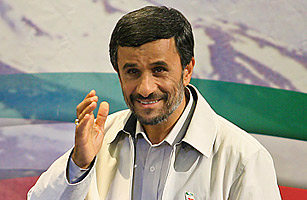
Despite all the bad-mouthing Iran gets from the West, the Islamic Republic is more democratic than most other nations in the Middle East. That's why millions of Iranians are in the streets, demanding that their votes be counted. Ayatullah Khomeini's 1979 Islamic revolution produced a hybrid political system combining the principle of giving the clergy ultimate executive authority with the holding of democratic elections — albeit from lists of candidates restricted by the clerics to those deemed loyal to the principles of the revolution — for parliament and the presidency. The result was a regime comprising competing factions and personalities, achieving its own version of checks and balances by distributing power across a variety of different institutions, from structures of government to unelected councils of clerics. Even the Supreme Leader, who holds ultimate executive power, is appointed by a clerical body — the 86-member Assembly of Experts — which also has the power to remove him.
The conflict in Iran thus far has been not so much a wholesale revolt of the masses against the system as a complex struggle for power within Iran's ruling establishment and a battle over the country's direction. Here's a Who's Who of the players who may determine Iran's future in the unfolding drama.